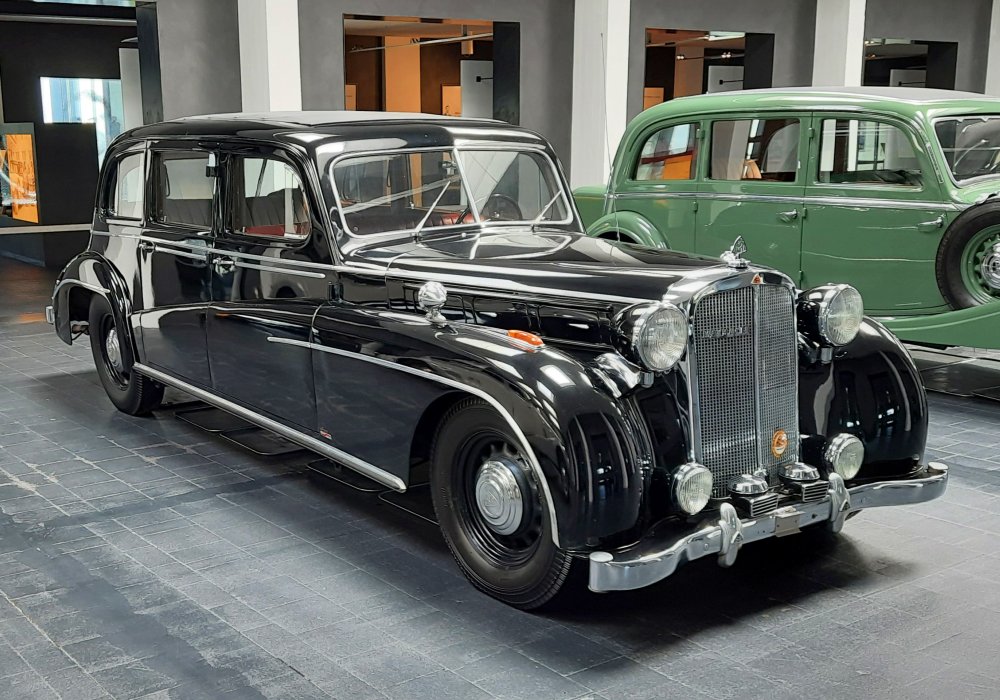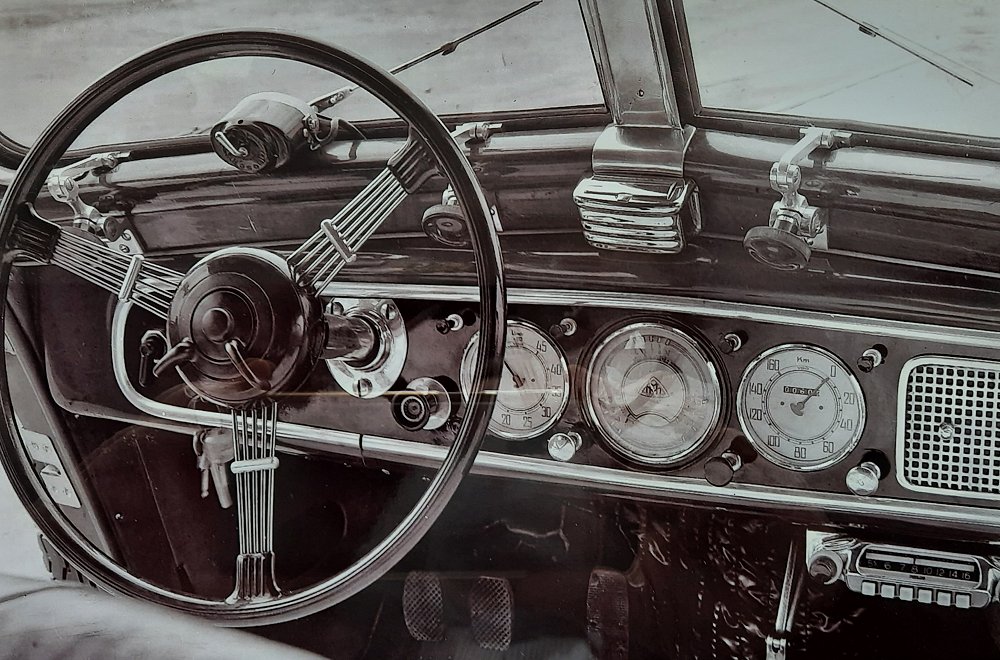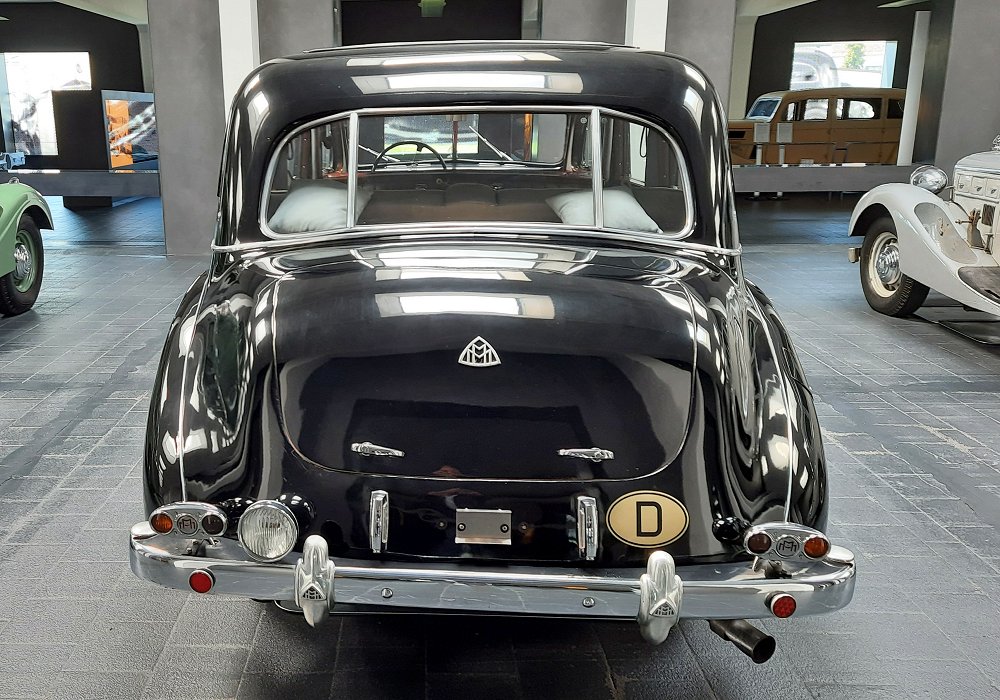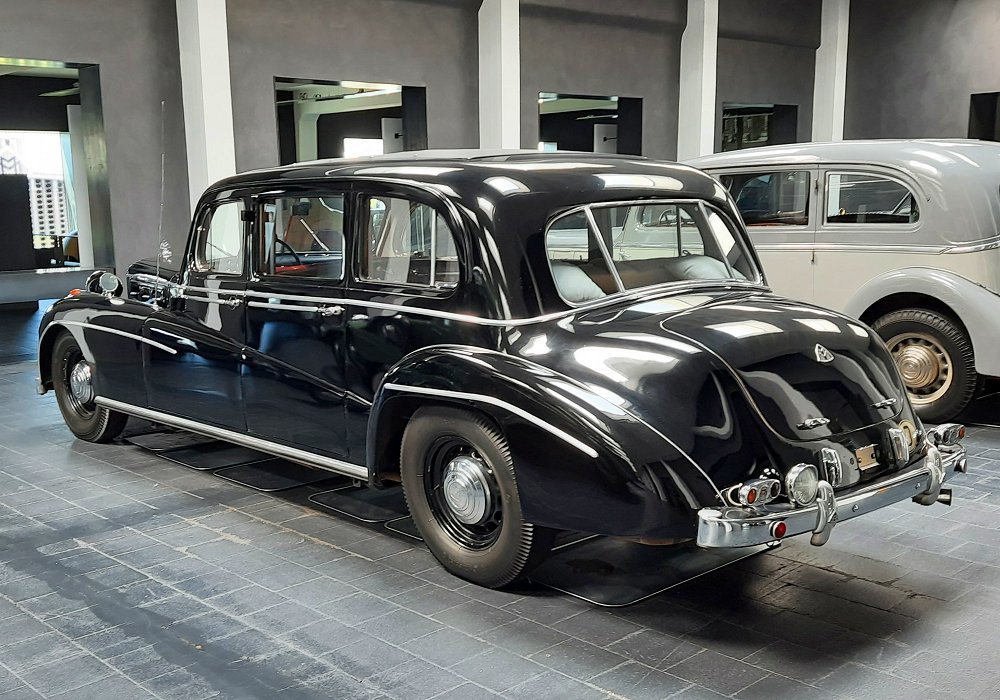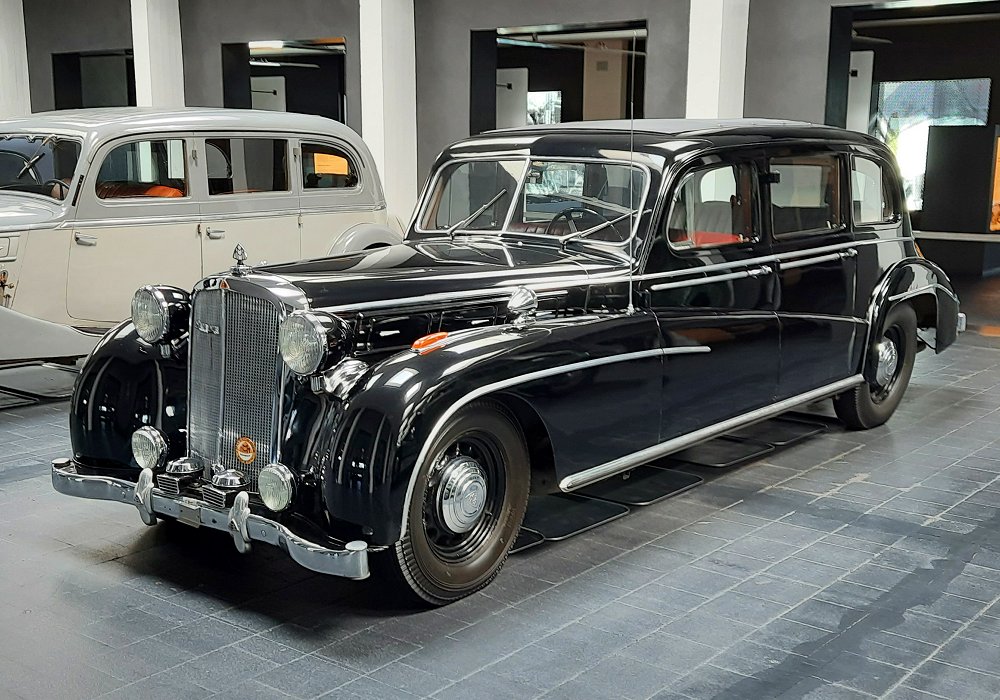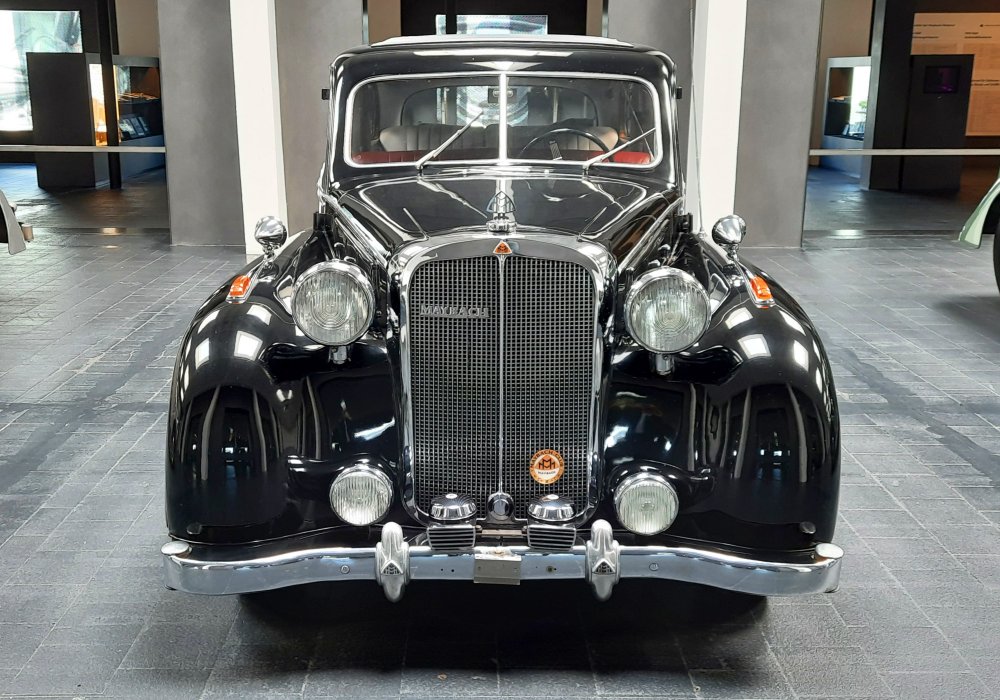Description
The Maybach SW 42 Pullman-Limousine by Spohn was one of the most imposing and prestigious luxury automobiles produced in Germany before the Second World War. Built on the most advanced of Maybach’s pre-war chassis and bodied by Spohn — the marque’s closest and most highly regarded coachbuilding partner — the SW 42 Pullman-Limousine represented the peak of bespoke chauffeur-driven motoring. Combining exceptional engineering, mechanical refinement, and opulent craftsmanship, it stood as one of the grandest formal cars of the late 1930s and remains today one of the rarest and most revered pre-war Maybachs.
The SW 42 chassis, introduced in 1939, was the ultimate evolution of Maybach’s independent-suspension series. Power came from the enlarged 4.2-litre straight-six engine, supercharged via a clutch-operated Roots-type compressor. With an output of around 160–170 horsepower, the SW 42 was among the most powerful German luxury cars of its era. The engine’s smooth, turbine-like delivery, its quiet operation and its immense torque reflected Maybach’s aviation-engineering origins. Even with the substantial weight of a Pullman body, the SW 42 could maintain high, relaxed cruising speeds without strain.
The chassis design was one of the SW 42’s greatest strengths. Maybach’s Schwingachse independent rear suspension, paired with independent front suspension, provided exceptional ride comfort and stability — far surpassing the rigid-axle systems still used by many luxury rivals. The long wheelbase of the Pullman configuration further enhanced smoothness, giving passengers a serene and unhurried ride. The stiff box-section frame served as a platform for heavier, more elaborate coachwork without compromising structural integrity or handling predictability.
The transmission was Maybach’s sophisticated semi-automatic preselector gearbox with torque converter, a system far ahead of its time. It allowed clutch-free gear changes in most conditions and delivered the smooth, unobtrusive progress that wealthy clients expected. For a chauffeur-driven Pullman, this was especially important, ensuring that passengers remained undisturbed regardless of road conditions or driver inputs.
Spohn’s Pullman-Limousine bodywork represented the pinnacle of pre-war German coachbuilding. The design prioritised formality, grandeur and refined proportion. The SW 42 Pullman-Limousine featured an extended roofline, broad rear doors, tall side glass and a dignified, upright stance that conveyed authority without unnecessary ornamentation. Flowing fenders, precisely shaped panels and graceful transitions between body sections showcased Spohn’s mastery of hand-formed metalwork. The car’s presence was commanding, befitting diplomats, industrial magnates and other elite clients.
Inside, the Pullman-Limousine delivered unparalleled luxury and craftsmanship. The rear compartment — the true heart of any Pullman — was appointed as a private salon. Deep, lavishly upholstered armchairs or a full-width rear bench offered supreme comfort. The interior was trimmed in the finest leather or high-grade cloth, complemented by polished hardwood veneers, immaculate stitching and exquisitely machined metal fittings. Amenities varied according to the original buyer’s wishes, but often included fold-out writing desks, illuminated vanity mirrors, smoking sets, heater units, reading lamps, intercom systems and custom cabinetry. Many examples included a division window separating driver and passengers for privacy. Every detail was meticulously handcrafted and designed to create an atmosphere of quiet, dignified opulence.
On the road, the SW 42 Pullman-Limousine delivered a smooth, quiet and assured driving experience. The supercharged straight-six provided effortless thrust, while the independent suspension absorbed road irregularities with ease. The long wheelbase contributed to stability, giving the Pullman a calm, stately character at any speed. Steering was deliberate but predictable, perfectly suited to a chauffeur-driven luxury car, and braking — through large hydraulic drums — was more than adequate for a vehicle of this size and capability. The SW 42’s mechanical refinement and composure made it one of the most advanced European luxury vehicles available in its day.
Production numbers for the SW 42 were very low due to its enormous cost and the outbreak of the Second World War, which soon halted civilian automobile manufacture. Pullman-Limousine bodies by Spohn were among the rarest variants, produced only to individual order for an elite clientele. Surviving examples today are exceptionally scarce and often regarded as museum-grade artifacts of pre-war German engineering and craftsmanship.
The Maybach SW 42 Pullman-Limousine Spohn remains an extraordinary symbol of prestige, luxury and technical sophistication. It represents the final and most refined expression of Maybach’s pre-war ideals: engineering excellence, bespoke craftsmanship and stately elegance. As one of the grandest automobiles ever to carry the Maybach name, it stands as a masterpiece of European automotive history.
